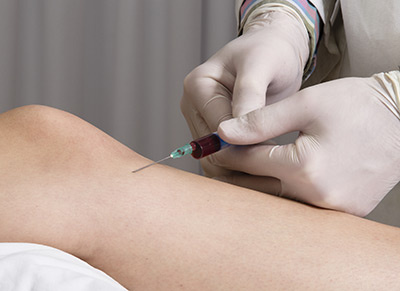A University of Iowa-led study measured the response of physicians to updated guidelines published in 2008 and 2013 by the American Academy of Orthopaedic Surgeons (AAOS). The research focused on how frequently physicians used two injections to relieve pain in patients with knee osteoarthritis.

A communication gap cited
The findings, published May 16 in the Journal of Bone & Joint Surgery, point to the need for additional ways to communicate revisions in clinical practice guidelines to physicians. Changes to the guidelines can have a major impact on the best choices for patient care and on the cost of care—but only if physicians are aware of those changes.
Both injections were in common use in 2007, and the researchers noted that the use of each was increasing at that time. But new editions of the AAOS guidelines in 2008 and 2013 revised recommendations for their use.
In 2008, corticosteroids were recommended for short-term pain relief of knee osteoarthritis; in 2013, conflicting evidence led AAOS to give no recommendation for or against use of the corticosteroid injection.
The 2008 guidelines gave no recommendation for or against the use of the hyaluronic acid injection for knee osteoarthritis because of a lack of evidence; by 2013, AAOS guidelines recommended against use of the injection because studies had shown no benefit.
Mining insurance data
Using information from an insurance company database, the researchers analyzed records for more than 1 million patients evaluated for knee osteoarthritis between 2007 and 2015 and identified all cases in which the physician used one of the two injections. The research team reported that, overall, there were “subtle but significant changes” downward in the use of the injections in response to the revised AAOS guidelines.
But a further analysis of the data also showed that, within some segments, the revised guidelines appeared to have little or no effect. For example, corticosteroid injections for patients under age 50 showed increases during the time studied, and trends in use of hyaluronic acid injection differed among physician specialties.
Potential cost savings
The authors of the study, noting that both injections are relatively high-cost treatments and do not have strong evidence supporting their use, urged the use of additional methods to communicate clinical practice guidelines as a way of improving the value of care provided to patients with knee osteoarthritis.
Authors of the study included Nicholas Bedard, David DeMik, Natalie Glass, Robert Burnett, and John Callaghan from the University of Iowa Department of Orthopedics and Rehabilitation. The team also included Kevin Bozic from the University of Texas at Austin.